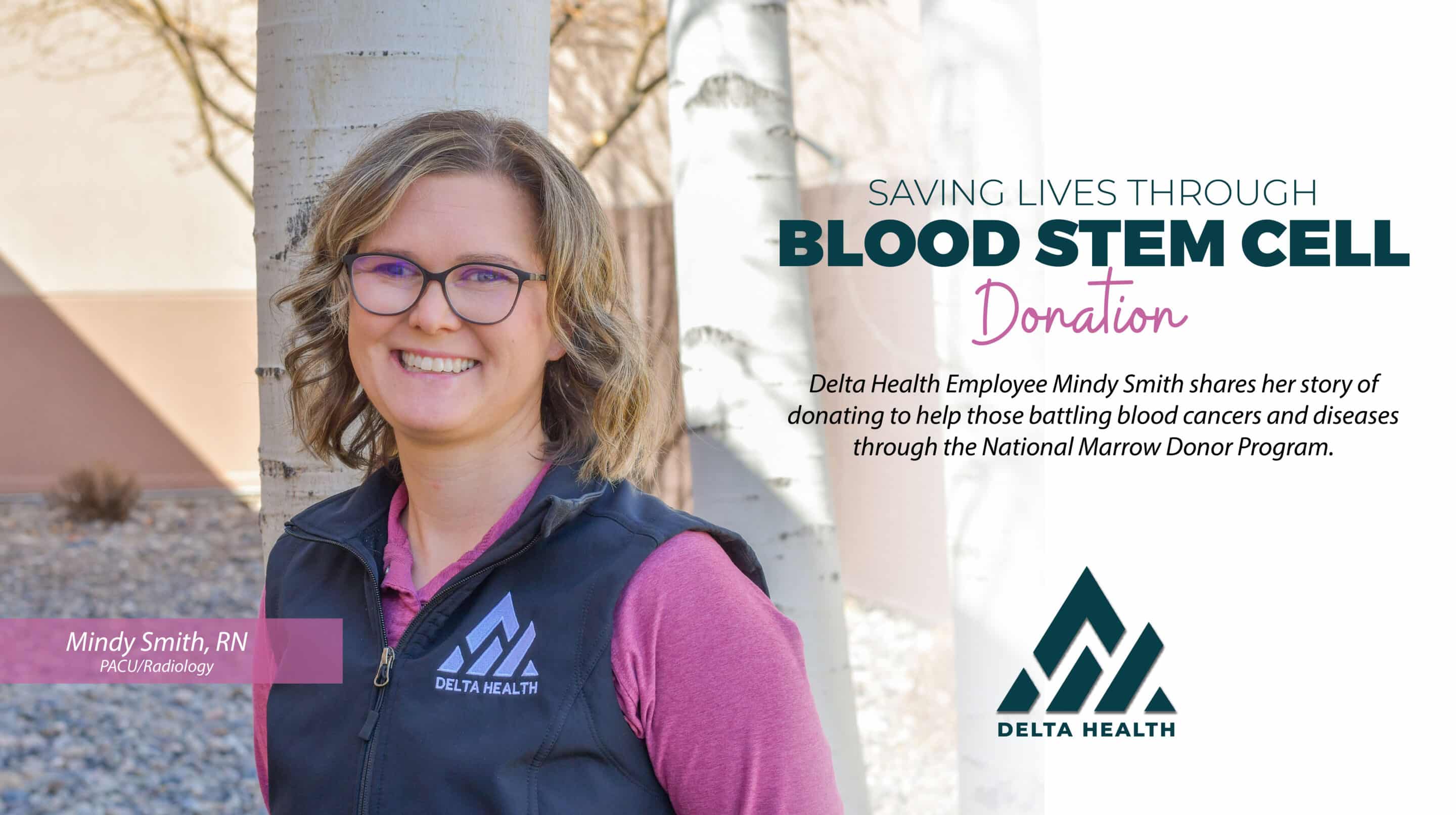Every three to four minutes, someone in the United States is diagnosed with a blood cancer like leukemia. For many, their only hope for a cure is a blood stem cell transplant.

Roughly six years ago, one of Mindy’s good friends and Delta Health co-workers, Chris Marshall, was diagnosed with acute myeloid leukemia. There were talks of this person needing a transplant and through an online registry called the National Marrow Donor Program (NMDP), previously called Be The Match, there was a potential to find one.
“At the time a bunch of us at Delta Health decided to sign up to be donors,” said Mindy. “So I sent in my cheek swab to be added to the registry and really didn’t think much of it until I got the call in February 2023 that I was matched with a patient and that my donation was needed.”
During that time, Mindy had another close encounter with leukemia when her mother was diagnosed. Her mother had two types of leukemia and was actually able to receive a donation through NMDP.
“It was my co-worker that I initially signed up for, but when I watched the donation process on the other end and saw my mom go through it, I really thought how can I not do this because someone did this for my mom,” said Mindy.
The entire process took about two months and required Mindy to do physicals and extensive blood testing to see if she was a good fit for donation.
“Once you get to the end part of the donation process and they determine you are in fact a good match, you get further evaluated and then start a medication that is a five-day injection to stimulate your bone marrow,” said Mindy.
The medication overproduces your stem cells and puts them into your bloodstream and when the cells reach a required level, you are then sent to a donation site. For Mindy, the donation site was in Seattle, Washington.
“They flew me to Seattle and it was a really neat experience because it’s actually where my mom received all of her care,” said Mindy. “I spent a lot of time there with her and had walked by the donation center I don’t know how many times, and it was a really neat experience to be on the other side of it.”

“What I had to go through to donate was really nothing compared to what those with cancer have to go through,” said Mindy. “Basically they kill all of their bone marrow and everything has to line up in place. I felt like it was a lot of pressure to make sure everything went smoothly so that the patient could receive the donation. Immediately after the process was done the cells had to be flown to wherever the patient is located and be used within a certain amount of time.”
The person receiving the blood cells is receiving high doses of chemotherapy and full body radiation for a few weeks prior to transplant to kill all of the cancer cells and condition their bone marrow to receive the new stem cells.
“I felt pretty tired at the end of the donation,” said Mindy. “My calcium was really low and I felt pretty sick that night, but by the next day I had my energy back. My son came with me to Seattle and we walked and explored the city before getting flown back home.”
NMDP only allows a limited amount of information to be shared with those donating. All that Mindy knew was that she was donating to someone who was a female in her mid-40s who was living in the United States and had acute myeloid leukemia. Participants also can’t have contact with each other for at least a year after the donation.
What Mindy did find out though, in December of 2023, is that the person she donated to is still alive.
“I would absolutely say sign up if you’re interested,” said Mindy. “You never know, and like me it could be a friend or family member of yours that ends up needing the donation.”
Only 70 percent of people diagnosed with leukemia have a donor match, and those statistics are even lower for people of different ethnicities.
When people do sign up to be donors, they can get called on multiple times to donate blood plasma depending on the need. They also sometimes require surgical bone marrow donations and will prepare donors for both situations.
“I would absolutely do it again,” said Mindy. “It taught me that there are people that go out of their way for people that they don’t even know, but it’s a real honor to get the chance to donate.”
For more information on how to donate, visit bethematch.org/.
****
Melinda has been working at the hospital for almost 20 years. She has a 17-year-old son and a 20-year-old son. She lives in Austin and enjoys all things outdoors like fishing, hiking, camping, mountain biking and more.



